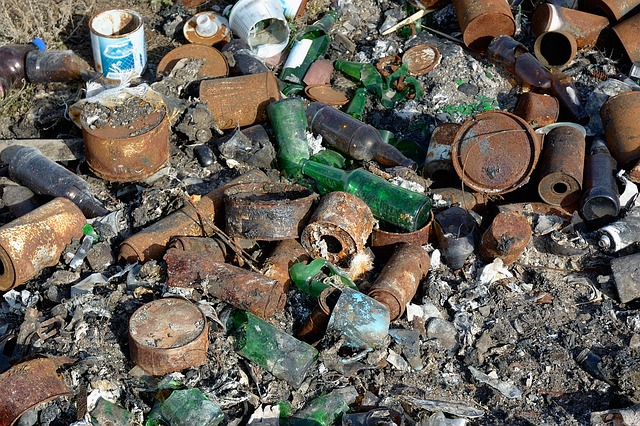Chemical pollution affects ecosystems, human health, and entire economies, making it one of the most pressing global environmental issues. Whether it’s pollutants in waterways, industrial emissions, or toxic waste, the consequences of chemical contamination have long-reaching effects.
Fortunately, modern technologies provide innovative approaches to detect, manage, and even reverse chemical pollution. From advanced monitoring systems to the use of artificial intelligence, these tools are empowering environmental scientists, policymakers, and organizations worldwide to take action.
This blog explains how cutting-edge technologies are revolutionizing our fight against chemical pollution and offers insights into methods like nanotechnology and bioremediation. By the end, you’ll understand how these advancements are paving the way for cleaner ecosystems and sustainable growth.
Advanced Monitoring Systems for Chemical Detection
Monitoring chemical pollution starts with detection, and advanced tools ensure this step is both accurate and efficient.
IoT Sensors and Smart Monitoring Networks
Internet of Things (IoT) devices have transformed environmental monitoring. IoT sensors can detect changes in water and air pollution in real-time, providing actionable data to researchers and municipalities. For example, IoT-enabled systems installed in water bodies can measure levels of heavy metals like mercury or cadmium, alerting users as soon as thresholds are breached.
These technologies are invaluable in creating smart, interconnected communities capable of responding swiftly to pollution events. Scientists collaborating with industries and governments are increasingly relying on these systems to enforce stricter compliance with pollution standards.
Spectroscopy and Chemical Sensors
Spectroscopic techniques, including mass spectrometry and UV-visible spectroscopy, allow for high-precision analysis of chemical pollutants even at trace levels. Portable chemical sensors, widely used by field researchers, are helping uncover contamination in hard-to-reach areas, reducing manual labor and time.
These advancements give scientists an edge by enabling more detailed analyses of environmental samples, allowing policymakers to draft targeted regulations based on accurate data.
Data Analytics and Predictive Modeling
Monitoring data is only as useful as the insights we can extract from it. This is where data analytics and predictive modeling step in.
Turning Raw Data into Actionable Insights
With vast quantities of data streaming in from sensors and monitoring systems, cloud-based platforms and big data analytics tools are transforming the way information is processed. These tools break down immense datasets, spotting trends and connections that human analysts might miss.
For example, patterns in air quality data combined with meteorological models can predict pollutant dispersion tendencies. This insight allows industrial operators to adjust processes proactively.
Predicting and Preventing Future Pollution
Sophisticated predictive models can forecast scenarios based on historical data and environmental factors. Tools like Geographic Information Systems (GIS) enable policymakers to simulate pollution spread and assess the impact of planned industrial activities.
This proactive approach enhances decision-making and reduces the risk of widespread pollution events, empowering governments and organizations to implement policies before damage is done.
Nanotechnology for Pollution Remediation
Nanotechnology, the science of manipulating materials at an atomic or molecular scale, offers groundbreaking solutions for chemical pollution.
Nanosorbents for Cleanup
Nanomaterials like carbon nanotubes and magnetic nanoparticles effectively absorb toxins from polluted environments. These nanosorbents are designed to target specific pollutants, such as hydrocarbons or pesticides, and remove them with remarkable efficiency.
Take, for example, nanosponges used to clear oil spills from oceans. These materials soak up petroleum-based pollutants with minimal environmental disruption.
Catalysts for Decomposing Pollutants
Nanocatalysts are capable of breaking down harmful chemicals into non-toxic substances. For instance, titanium dioxide nanoparticles can degrade organic compounds in wastewater through photocatalysis, a process powered by sunlight.
The potential for scalability ensures that nanotechnology will play a vital role in large-scale cleanup projects, promoting sustainability in industries from mining to manufacturing.
Biotechnology and Bioremediation
Nature often provides answers to challenges like pollution—and biotechnology leverages these natural processes to mitigate chemical contamination.
Microorganisms as Pollution Fighters
Bioremediation uses bacteria and fungi to neutralize hazardous chemicals in soil, air, and water. For example, certain microbes break down the hydrocarbons present in oil spills, effectively “eating away” the pollution.
Recent advancements in genetic engineering enable scientists to develop microorganisms specifically tailored to target stubborn pollutants. Bioengineered enzymes now help dismantle complex chemicals such as dioxins, which were once deemed nearly impossible to treat.
Phytoremediation: Plants to the Rescue
Plants like sunflowers and willow trees have proven effective at absorbing heavy metals from contaminated soil. Known as phytoremediation, this process is cost-effective, environmentally friendly, and adds a touch of green to areas undergoing rehabilitation.
Efforts combining biotechnology and high-tech sensors promise to radically alter the way ecosystems recover, shifting the focus away from chemical-intensive remediation methods.
AI and Machine Learning
Artificial Intelligence (AI) and machine learning (ML) are game-changing technologies that enhance every aspect of chemical pollution management.
Identifying Patterns and Risks
AI algorithms excel at identifying the presence of chemical pollutants in large, diverse datasets. More importantly, they can determine relationships between factors like industrial practices and pollution levels, uncovering systemic issues.
Machine learning tools are also being utilized to monitor environmental health. For example, drones equipped with AI-powered sensors can fly over industrial zones and assess air quality, significantly speeding up inspections.
Driving Efficiency in Pollution Management
AI-driven decision-support systems enable industries to optimize their operations in ways that minimize waste and pollution. Adaptive AI can predict when processes will generate higher emissions, allowing plant managers to make real-time adjustments.
The integration of AI into policy development also helps governments craft more effective environmental regulations by basing them on data-backed simulations and predictions.
Paving the Way for a Cleaner Future
The impact of chemical pollution is far-reaching, but thanks to advancements in technology, we now have the tools to combat it more effectively than ever. From real-time monitoring to predictive analytics, molecular-level solutions, and biotechnological breakthroughs, modern innovations empower us to prevent, detect, and resolve contamination.
However, continued success will rely on collaboration between environmental scientists, policymakers, industries, and the public. Governments must implement incentives encouraging the adoption of greener technologies, while organizations should prioritize transparency and sustainability.
Modern technologies are not just helping us address current pollution challenges but also creating opportunities to prevent future damage. By leveraging these advancements, we can look forward to a cleaner, healthier planet.
If you’re eager to learn more or share your insights, consider participating in upcoming discussions with leading environmental experts. Together, we can make a difference.

